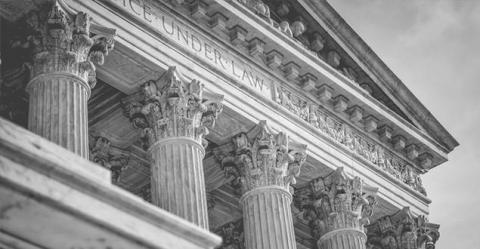Wisconsin Has Taken Its Partisan-Gerrymandering Case to the U.S. Supreme Court—Here’s What Happens Next
With today’s filing of a notice of appeal by the State of Wisconsin, the U.S. Supreme Court may be poised to take its first look at the constitutionality of politically driven line-drawing in more than a decade.
The notice of appeal—filed this afternoon in Whitford v. Gill—seeks the Court’s review of a recent 2-1 ruling that Wisconsin’s 2011 state assembly redistricting plan was a partisan gerrymander that violated both the First and the Fourteenth Amendments. The 116-page majority opinion described the gerrymander as “an aggressive ” that guaranteed a Republican majority in the state assembly “in any likely electoral scenario.”
The panel’s ruling for the plaintiffs was a signal event. It marked the first time in more than three decades that a federal court ruled for the plaintiffs in a partisan-gerrymandering suit after a full trial. It also dealt a critical blow to a very particular kind of gerrymander—call it “extreme seat-maximization”—that emerged in Wisconsin and a handful of other states in the most recent redistricting cycle. And the panel cited as “corroborative evidence” a new social-science measure—the “efficiency gap”—which a team of academics developed to respond to suggestions from several Supreme Court Justices that “partisan symmetry” could be used to police gerrymandering.
Now that the state’s notice of appeal is on the docket, the Court may be primed to revisit the merits of a partisan-gerrymandering claim and finally lay out the “judicially manageable test” for detecting unconstitutional gerrymandering—or, at least, its most extreme kinds—that it has been searching for ever since it badly fractured over the issue in Jubelirer v. Vieth (2004) and League of United Latin American Citizens v. Perry (2006).
The state has yet to present the exact issues for its appeal. But we can already get a sense of a possible timeline for key events in the case by referring to the Supreme Court’s rules and calendars, as well as by assuming that the parties take their full time for each filing.
- April 25, 2017. The deadline for Wisconsin’s jurisdictional statement—which will likely include a formal request that the Court hear the case.
- April 28, 2017. The date the Court dockets the jurisdictional statement, triggering the clock on the remaining briefing.
- June 12, 2017. The close of briefing on the request for the Justices to hear the case.
- June 15, 2017. The conference where the Justices would first consider whether to hear the case.
- June 19, 2017. The earliest date following the June 15 conference for the Court to announce its decision to hear the appeal and take briefing on the merits.
If the Court decides on June 19 to hear the appeal:
- August 3, 2017. The deadline for the state’s opening brief on the merits.
- September 4, 2017. The deadline for the plaintiffs’ opposition brief.
- October 4, 2017. The deadline for the state’s reply.
- November 2017 to December 2017. Assuming the preceding schedule holds, the Court will likely hear oral argument in this time frame.
These timelines are not set in stone. For example, if the parties speed up their filings in the jurisdictional phase of the case, they could have the case fully briefed by the end of August 2017, which would likely set up oral argument for late October 2017.
On the other hand, the Justices could slow the case down if they follow their typical practice of taking more than one conference to request merits briefing. This could push the Court’s decision on Wisconsin’s jurisdictional statement past its summer recess and into September’s “long conference.” Under that timeline, the parties would wrap up merits briefing in early January 2018 and likely have oral argument in the January to March 2018 window.
If the Justices do take up the case, they will be doing so at a critical juncture in American politics. Since the last redistricting cycle, partisan gerrymandering and its ill effects have reached new, intolerable extremes in Wisconsin and elsewhere, with legislators taking advantage of political dysfunction and increasingly powerful mapping technology to lock-in advantages over their political opponents.
Stay tuned for more as one of the potentially most important redistricting cases of the decade develops.


Spread the word